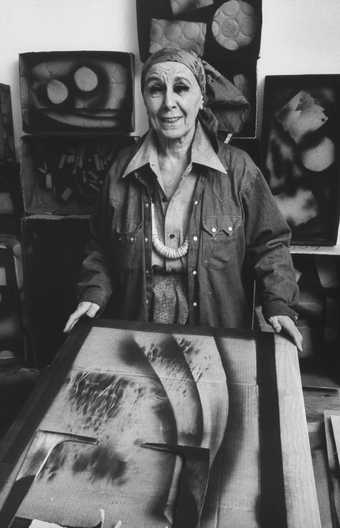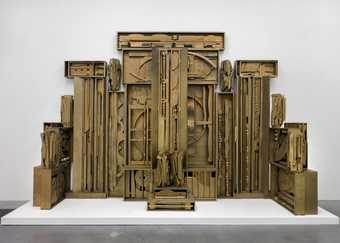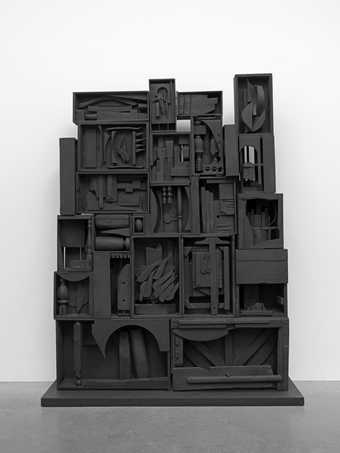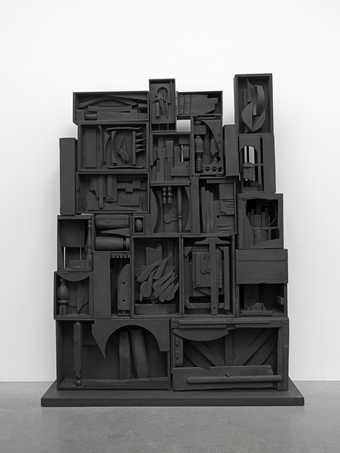
Louise Nevelson in her studio in New York City, 1974
Gjon Mili/The LIFE Picture Collection/Getty Images
A few days after Louise Nevelson, née Leah Berliawsky, was born in a town near Kiev in 1899, Sholem Aleichem, the renowned writer of Yiddish tales, pronounced that she was destined for greatness. Sure enough, five decades later she attained art stardom in New York City, far from her impoverished youth in an immigrant family in Rockland, Maine.
Stifled by a conventional marriage (at the age of 20) to a Manhattan millionaire and finding that the role of mother was not compatible with that of artist, Nevelson fled to Europe to study with the painter and respected teacher Hans Hofmann. Her forward-looking mother financed and encouraged her daughter to fly free and aim high. Well before the rise of feminism, she pursued the one activity that gave her satisfaction and endless pleasure – making art.
Ultimately divorcing her husband, she ascended the heights of the macho New York art world. As a beautiful young woman, Nevelson attracted many male suitors both in and outside the art world (some of whom I interviewed). The older Nevelson used startlingly original outfits and minimal make-up, with the exception of furry false eyelashes, to attract attention to herself. She always made a splash at openings and art events. Potential collectors charmed by her charismatic persona were thus primed to look at and ultimately buy her work, a unique style of assemblage using wood or metal fragments which she cohered into harmonic wholes.

Louise Nevelson
An American Tribute to the British People (1960–4)
Tate
From the very beginning of her career, critics praised her, and though she always claimed independence from art world opinion, she was responsive to her four principal dealers. The first, Karl Nierendorf, put her on the map; the second, French-born Colette Roberts, offered deep understanding, allowing her to develop her signature style; the third, successful businesswoman Martha Jackson, made her rich and internationally known. And then after a brief but disastrous alliance with renowned dealer Sidney Janis, she met Arne Glimcher, then a young man at the very beginning of his meteoric rise to becoming one of the world’s most successful art dealers.
With Glimcher’s Pace Gallery backing her, Nevelson rose to the top of the international art scene, and when she died at 88 she was considered to be one of America’s most prominent woman artists. Today, her work is housed in major contemporary art collections around the world, including Tate.


